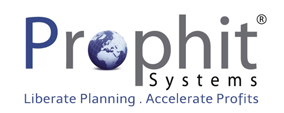A CHECKLIST FOR YOUR PLANNING PROCESS

It is a common time to review how you are tracking to budget and how you see the next twelve months are panning out.
Agile businesses using their planning processes to predict what might happen, and prepare the practical action plans, specific to their business.
Two recent examples of action plan generation we have been involved in include:
– A company running promotions of certain products without giving our client the desired notice. They are responding to their competitors’ promotions, and cannot give the requested lead time. With this understanding, we have developed strategies to support these un-forecasted promotional activities.
– A competitor attempts to acquire a customer from our client. One of these two customers enjoys lower costs because of their volumes. They will expect improved pricing across both portfolios. Not sure I follow these 2 lines. Being prepared for the pending price negotiations, my client is now preparing defensive strategies to achieve cost downs, without sacrificing margin.
Developing a playbook for the year ahead is not as hard as it seems, if you follow the basic steps identified below:
Step 1.
Take the time to confirm you best estimate sales forecast, zone in on those products and customers that are performing above forecast, and those that are underperforming.
Identify the major risks and the opportunities around these forecasts.
Develop a high and a low range forecast based on a number of these risks and opportunities playing out.
Step 2.
Confirm the business consequences and corrective actions if you hit these high or low forecasts.
Develop action plans to address the risks and seize the opportunities as they arise. These will become your set action plans that will help you stay on the high side of your forecasts.
Step 3.
Phase the action plans according to ‘Go – No Go’ criteria. These become your set action plans.
Empower your staff with these set action plans. If these ‘Go’ conditions have occurred then invoke the action plans. (i.e execute the action plans and then confirm that you have done them.)
Step 4.
Review weekly and monthly, see how your sales are tracking to forecast, review your best estimate, and see how it is tracking. Determine if your corrective actions / set plays are still current and still adequate.
In practice these forecasts and set action plans become a working document. The exciting outcome of this approach is two fold: first you will find you are responding to opportunities much faster than if you are purely reactive,
Secondly your management team will feel and act more in control, as they look ahead at what will happen, rather than steering the company by looking in the rear view mirror.
Question – does this approach increase the likelihood of achieving desired approach? If yes, how? Hard ROI? Soft ROI? The 2 outcomes above seem to move to a soft ROI. Answering this question with both hard ROI and soft ROI will motivate the companies to follow your approach.
